ESG / CSR
Industries
What is a European Pressurised Reactor (EPR)?
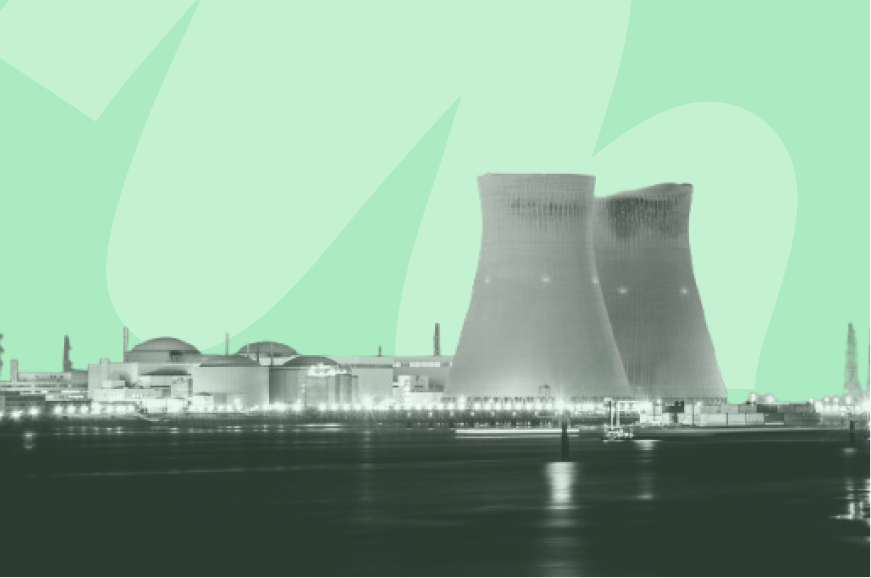


Nuclear energy has long been a source of debate, balancing its potential as a low-carbon energy solution against concerns about safety, cost, and waste. Despite the controversies, nations, and industries worldwide continue to invest in nuclear technology as part of their energy strategies. Among the more recent advancements in this field is the European Pressurised Reactor (EPR) - a next-generation nuclear reactor designed to enhance safety, efficiency, and power output. Yet, like any technology, EPRs are not without their challenges.
👉 What exactly is a European Pressurised Reactor, and what are the limitations that have drawn criticism?
What is a European pressurised reactor (EPR) ?
A European Pressurised Reactor (EPR) is a type of nuclear reactor that belongs to the third generation of pressurised water reactors (PWRs). EPR reactors build on the strengths of earlier models while incorporating advanced safety features and greater efficiency.
At its core, a nuclear reactor like the EPR generates electricity by harnessing nuclear fission – a process where the nucleus of an atom is split, releasing a significant amount of energy. This energy heats water to produce steam, which drives turbines connected to electricity generators.
What sets the EPR apart is its focus on improved safety and performance. With a more robust containment structure and redundant safety systems, the EPR aims to reduce the risk of accidents. It is also designed to operate at higher efficiency, producing more electricity from the same amount of nuclear fuel compared to older reactors.
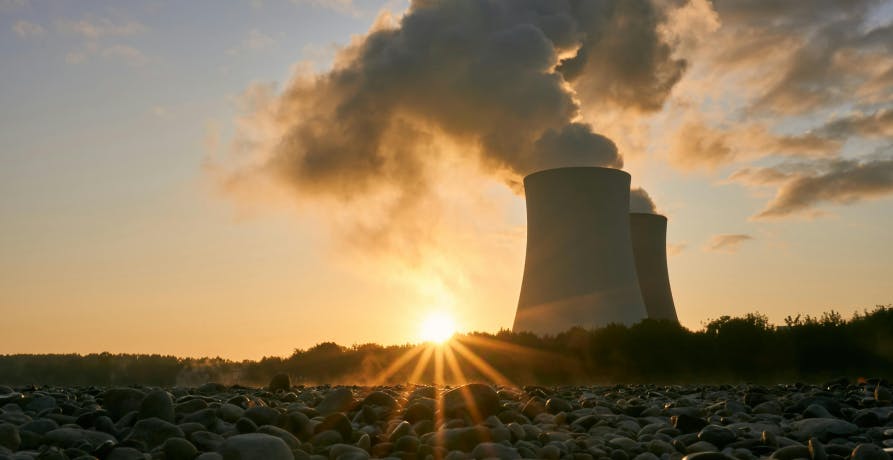
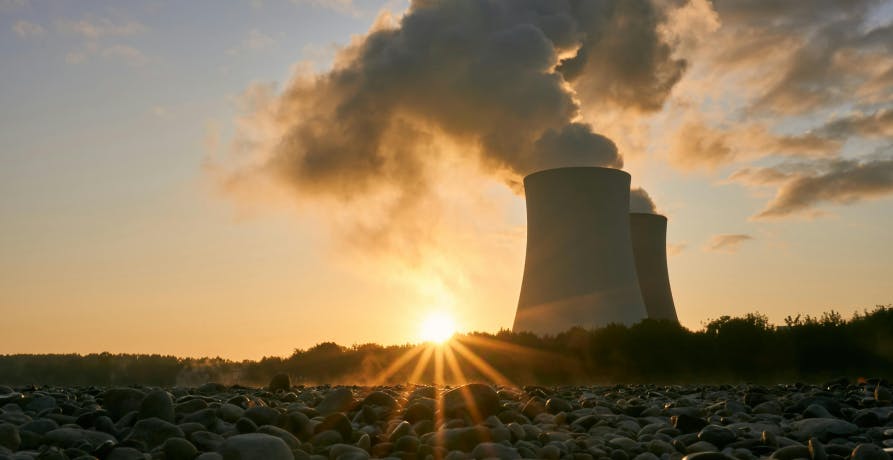
What is nuclear power?
Nuclear power generates energy by converting water into steam using heat produced through a process called nuclear fission. During fission, the nucleus of an atom is split into smaller parts, releasing a tremendous amount of energy. A nuclear reactor serves as a controlled environment where this reaction can safely occur and be harnessed for power generation.
What is a pressurised water reactor (PWR)?
A pressurised water reactor (PWR) is a type of nuclear reactor that uses regular water, also known as light water, as both a coolant and a moderator. In a PWR, water is kept under high pressure in thin coils to prevent it from boiling, even at extremely high temperatures. This superheated pressurised water then transfers heat to a secondary loop of lower-pressure water. When the pressurised water interacts with the lower-pressure water, it produces steam, which drives turbines to generate electricity.
Light water vs heavy water
Light water, or normal water, contains hydrogen atoms with a single proton in their nucleus. In contrast, heavy water is water in which the hydrogen atoms are replaced with deuterium, an isotope of hydrogen that includes a neutron in addition to the proton. This seemingly small difference gives heavy water unique properties, such as a greater ability to slow down neutrons during fission reactions.
In older generations of nuclear reactors, heavy water played a key role because it allowed reactors to use natural uranium instead of enriched uranium as fuel. Modern reactors, including PWRs, typically rely on light water for simplicity and efficiency, marking a shift in how engineers approach nuclear reactor design.
What is a third-generation nuclear reactor?
As nuclear technology has evolved, successive generations of reactors have introduced notable advancements in safety, reliability, and efficiency. Each "generation" represents a significant step forward in design and performance. While the changes from second to third-generation reactors were incremental rather than revolutionary, they still brought meaningful improvements, especially in safety and standardisation.
Third-generation nuclear reactors were designed to address many of the limitations of earlier models. They incorporate enhanced safety systems, improved fuel efficiency, and standardised designs, which help reduce construction costs and streamline operations.
A naming clarification
The European Pressurised Reactor (EPR) is sometimes referred to as an Evolutionary Power Reactor outside of Europe. Regardless of the regional variation in terminology, "EPR" is a universally recognised abbreviation.
The first EPRs in operation
The first fully operational EPR was Taishan 1 in China, which began contributing power to the grid in December 2018. It was soon followed by its twin, Taishan 2, which came online a year later. These two reactors marked a milestone for EPR technology, showcasing its capabilities on a commercial scale.
Standout characteristics of EPRs
Safety features
Third-generation reactors, including EPRs, prioritise safety far more than their predecessors. EPRs, in particular, feature robust systems designed to handle extreme scenarios and mitigate risks. Key safety enhancements include:
- Redundant cooling systems: EPRs are equipped with four independent emergency cooling systems. These systems ensure the reactor can remain cooled for up to three years after a shutdown, significantly reducing the risk of overheating.
- Leak-proof containment: To prevent disasters like Chernobyl, EPRs are designed to be completely leak-proof around the reactor core. They also include an additional containment vessel and cooling area as a failsafe in case radioactive materials escape.
Power potential and efficiency
EPRs represent a leap forward in energy efficiency and output compared to other nuclear reactors:
- Fuel efficiency: EPRs require approximately 17% less nuclear fuel than older reactors to produce the same amount of energy. This reduces operational costs and nuclear waste.
- Higher output: Compared to many other modern reactors, EPRs can produce up to 14% more power, making them one of the most efficient designs in use today.
Defence against extreme events
The structural design of EPRs reflects a commitment to resilience in worst-case scenarios. Each reactor is housed within two layers of reinforced concrete walls, which together measure over eight feet thick. This robust construction is intended to withstand catastrophic events, such as an internal meltdown or even the impact of a commercial airliner.
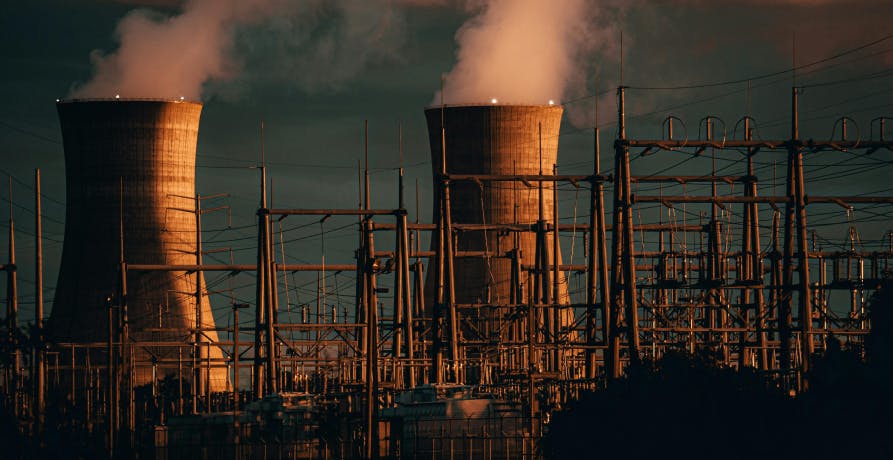
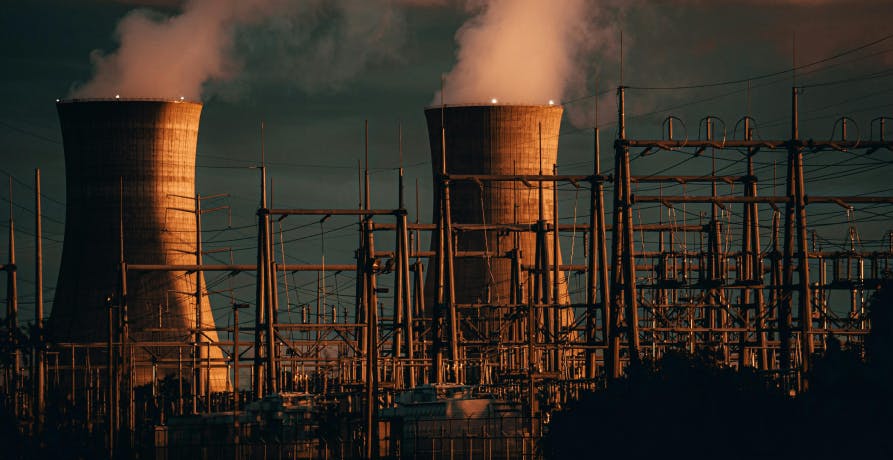
EPR problems
While EPRs represent advancements in nuclear technology, they also face significant challenges that have sparked criticism. From their rigidity in adapting to modern energy needs to costly delays and technical issues, these factors highlight some of the difficulties associated with deploying EPRs.
Inflexibility in a renewable-focused energy grid
The energy landscape has shifted dramatically since the EPR was first conceptualised, with renewable energy sources like wind and solar now account for a significant share of global power generation. These sources are inherently variable, producing energy based on the availability of natural resources like sunlight and wind. For example, a location with extensive solar panels and wind turbines might experience an energy surplus on sunny, windy days, while overcast, still days could lead to a deficit.
Modern energy systems thrive on flexibility, quickly adjusting to fluctuations in power supply and demand. Unfortunately, EPRs are not well-suited to this dynamic. Their large size and operational design make them relatively inflexible, as they cannot rapidly start-up or shut down to accommodate sudden shifts in energy production from renewables. In a grid increasingly reliant on intermittent renewable sources, this lack of adaptability can pose a challenge. The sheer amount of power generated by an EPR becomes less valuable if it cannot be integrated effectively when needed most.
Cost overruns and delays
EPR projects have been plagued by significant delays and cost overruns, raising questions about their economic viability. As reported by World Nuclear News, three prominent examples illustrate these issues: Flamanville EPR in France, Olkiluoto 3 EPR in Finland, and Hinkley Point C in the UK.
- Flamanville EPR (France): The Flamanville EPR, the second EPR unit to start construction, began development in Normandy Construction in 2007 with an initial estimate of six years to complete and a projected cost of €3.3 billion. However, the project has faced repeated delays, extending its timeline to 17 years. The reactor vessel finally started commercial operation in December 2024. Estimated costs had escalated to a staggering €12.4 billion, nearly quadrupling the original budget. According to Nuclear Engineering International, these delays were partly due to complex regulatory requirements and technical challenges such as welding issues and safety inspections, which added significant costs to the project.
- Olkiluoto 3 EPR (Finland): The first EPR to begin construction, Olkiluoto 3, started in 2005 and was initially slated for completion in 2009. Instead, it only became commercially operational in 2022 after a 13-year delay. The prolonged timeline caused significant cost increases and disrupted Finland’s energy planning. Nuclear Engineering International has reported that a combination of supply chain issues and initial design modifications contributed to the extended timeline, disrupting Finland’s energy planning and significantly inflating costs.
- Hinkley Point C (UK): Another high-profile EPR project, Hinkley Point C in the UK, has faced similar challenges. Construction began in 2016, with the original cost estimated at £18 billion. However, ongoing delays and design adjustments have pushed the projected cost to over £32 billion, with the completion date now expected around 2027. According to reports from both World Nuclear News and Nuclear Engineering International, the cost increases stem from inflationary pressures, supply chain complications, and technical hurdles related to the complexity of EPR designs. The success or failure of Hinkley Point C could influence whether EPR reactors are pursued for possible future power stations in the UK and beyond.
As we can see from these examples delays are often attributed to a combination of complex engineering requirements, regulatory hurdles, and unexpected technical challenges. For example, corrosion in water circuits, a known issue in pressurised water reactors like EPRs, has emerged as a recurring problem. Corrosion not only raises safety concerns but also clogs steam generator tubes, potentially requiring the replacement of key components before the reactor can begin commercial operation. Such setbacks add both time and expense to already costly projects.
Balancing potential and practicality
EPRs were envisioned as a solution to meet the world’s growing energy needs while enhancing safety, efficiency, and electrical power output. However, their rigidity in adapting to fluctuating energy demands, coupled with substantial costs and delays, has limited their appeal. As the energy grid increasingly prioritises flexibility and renewable integration, the challenges faced by EPRs raise important questions about their role in a sustainable energy future.
Nuclear energy FAQ
Can a nuclear reactor explode?
No, a nuclear reactor cannot explode like a nuclear bomb. Nuclear explosions require an immense amount of tightly compacted energy, which is not present or achievable in a reactor's controlled environment. Reactors are designed to manage nuclear fission in a regulated manner, preventing the kind of uncontrollable chain reactions that lead to explosions.
However, nuclear reactors can experience other catastrophic failures, such as meltdowns, when the reactor core overheats. While these are rare due to modern safety measures, the consequences can be severe, as demonstrated by historical incidents like Chernobyl and Fukushima.
Is nuclear energy as clean as it seems?
Nuclear energy is often promoted as a clean alternative to fossil fuels because it produces no direct carbon emissions during operation. However, the full nuclear energy life cycle reveals environmental impacts that are often overlooked.
- Uranium mining and processing: Extracting uranium, the primary fuel for nuclear reactors, involves intensive mining operations that rely heavily on diesel-powered machinery. This results in significant greenhouse gas emissions, as well as environmental degradation from land disruption and waste from mining activities.
- Water vapor emissions: While nuclear plants do not emit carbon dioxide or methane directly, they release water vapor, a greenhouse gas, as a by-product of cooling operations. Though less impactful than CO₂ or methane, water vapor still contributes to the greenhouse effect.
- Long-term waste: Handling radioactive waste is another major concern. The spent fuel rods and other materials generated by nuclear plants remain hazardous for thousands of years, requiring secure storage solutions that are both expensive and technically challenging.
The issue of nuclear waste
One of the most pressing challenges in nuclear energy is the management of nuclear waste. The radioactive by-products of nuclear fission must be stored securely for millennia to prevent contamination of the environment.
Governments and industry advocates assure the public that waste is safely stored, but the long timescales and risks of accidents or leaks remain a concern. Additionally, as more nuclear plants are built and become operational, the volume of waste increases, raising questions about the long-term feasibility of current storage solutions.
Even without a direct accident, the more nuclear reactors are operational, the greater the chance - however slim - of a future radioactive leak or mishap.
What is the safest nuclear reactor design?
The safest nuclear reactors are generally the most modern, as each generation builds on lessons from the past. Currently, fourth-generation nuclear reactors are considered the safest due to advanced safety features, improved fuel efficiency, and designs that minimise the risk of catastrophic failure.
Other experimental technologies, such as thorium reactors and small modular reactors (SMRs), are also being tested for feasibility and safety.
The next generation of nuclear power
For nuclear energy to remain a viable power source in the future, it must become more adaptable to the dynamic nature of modern energy grids. As discussed earlier, one of the major limitations of current EPRs is their inability to quickly adjust their output to accommodate fluctuations in renewable energy production.
Small modular reactors (SMRs) could provide a solution to this. These reactors are designed to be:
- More flexible: SMRs can ramp their output up or down more quickly, making them better suited to work alongside intermittent renewable sources like wind and solar.
- Cheaper and faster to build: Thanks to their compact size and standardised parts, SMRs reduce construction costs and time significantly compared to traditional reactors.
- Safer and more efficient: Their smaller size and modern designs incorporate the latest safety advancements, reducing the risks of catastrophic failure.
By addressing the shortcomings of existing reactors and adapting to the needs of a renewable-powered future, SMRs and other agile technologies could redefine the role of nuclear power in achieving global energy goals.
Where are nuclear reactors located?
Nuclear reactors are operational in many countries around the world, reflecting their role as a key part of the global energy mix.
- Global leaders: The United States leads in the number of reactors, with 96 currently in operation. France is a close second with 56 reactors, followed by China, which has rapidly expanded its nuclear capacity with 54 reactors. Other countries with significant nuclear fleets include Russia, Japan, and South Korea.
- European presence: In Europe, nuclear power is a major energy source in countries like France, which generates around 70% of its electricity from nuclear power. Other European nations, including the United Kingdom, Germany, Sweden, and Finland, also have operational reactors, though their reliance on nuclear energy varies.
- Asia’s nuclear growth: Asia is emerging as a major player in nuclear energy. Alongside China, countries like India and South Korea are expanding their nuclear programs, while Japan is gradually bringing reactors back online after the Fukushima disaster.
If you’re curious about where nuclear reactors are located in specific countries, various online maps and databases provide detailed overviews of global nuclear sites. For example, the International Atomic Energy Agency (IAEA) offers comprehensive information about reactor locations and capacities worldwide.
Nuclear power and the fight against climate change
Nuclear power plays a significant role in the global effort to combat climate change due to its capacity for large-scale electricity generation with minimal direct carbon emissions. As nations strive to reduce their dependence on fossil fuels, nuclear technology, including European Pressurised Reactors (EPRs), is increasingly viewed as part of a low-carbon energy strategy.
Low-carbon energy generation:
Nuclear power plants, including EPR reactors, produce electricity without emitting carbon dioxide during operation. This makes them a valuable complement to renewable energy sources like wind and solar, which can be variable and dependent on weather conditions. EPRs, with their high electrical power output, offer a stable source of energy capable of reducing reliance on coal, oil, and natural gas - major contributors to global greenhouse gas emissions.
Energy security and reliability:
Unlike intermittent renewable sources, nuclear reactors can operate continuously, providing a reliable energy supply that helps stabilise the grid. EPRs, in particular, are designed for improved fuel efficiency and extended operational periods, making them well-suited for base-load electricity generation while countries scale up renewable energy infrastructure.
Challenges and waste considerations:
While nuclear energy offers climate benefits, challenges remain - particularly the management of long-term radioactive waste and high upfront construction costs. However, next-generation designs like EPRs aim to reduce waste production and enhance safety, potentially making nuclear a more attractive option for sustainable energy portfolios.
A complementary solution, not a standalone fix:
Although nuclear power can significantly reduce emissions, it is not a standalone solution. For climate goals to be achieved, they must work alongside a broader mix of clean technologies, including wind, solar, energy storage, and demand management systems. Policymakers increasingly view EPRs as part of a diverse energy mix capable of supporting the transition to a low-carbon future.
As the world faces mounting pressure to decarbonise, nuclear power - despite its challenges - remains a critical consideration for countries seeking both energy security and meaningful emissions reductions.
What about Greenly?
At Greenly, we specialise in helping companies track, analyse, and reduce their carbon emissions, offering tailored solutions to meet sustainability goals. Whether you’re exploring energy options or assessing the environmental impact of your operations, our platform makes managing carbon emissions straightforward and actionable.
Here’s how Greenly can support your business:
- Carbon tracking: Our platform monitors emissions across Scope 1, 2, and 3, providing a detailed breakdown of where your emissions come from.
- Tailored action plans: We offer customised recommendations to help businesses reduce emissions, improve energy efficiency, and transition toward more sustainable practices.
- Supply chain insights: Greenly helps you identify sustainable suppliers and manage the environmental impact of your value chain.
- Science-based targets: We assist businesses in setting and achieving targets aligned with the latest climate science, including support for Science-Based Target Initiative (SBTi) certification.
By leveraging Greenly’s expertise, you can take actionable steps to reduce your carbon footprint and contribute to a more sustainable future.
👉 Interested in learning more? Reach out to see how Greenly can help your company lead the way in sustainability.






